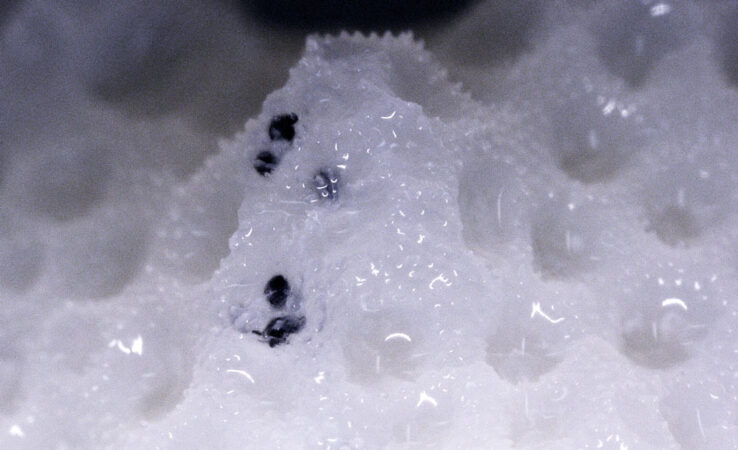A surprising amount of plastic pollution in the ocean may wind up in a previously overlooked spot: the skeletons of living corals.
Up to about 20,000 metric tons of tiny fragments called microplastics may be stored in coral skeletons worldwide every year, says ecologist Jessica Reichert of Justus Liebig University Giessen in Germany. That corresponds to nearly 3 percent of the microplastics estimated to be in the shallow, tropical waters where corals thrive.
Corals have been observed eating or otherwise incorporating microplastics into their bodies (SNS: 3/18/15). But scientists don’t know how much of the debris reefs take up globally. So Reichert and colleagues exposed corals in the lab to microplastics to find out where the particles are stored inside corals and estimate how much is tucked away.
Corals consumed some of the trash, or grew their skeletons over particles. After 18 months, most of the debris inside corals was in their skeletons rather than tissues, the researchers report October 28 in Global Change Biology. After counting the number of trapped particles, the researchers estimate that between nearly 6 billion and 7 quadrillion microplastic particles may be permanently stored in corals worldwide annually.
 Tiny plastic particles (black spots in this image of coral that has had its tissue removed) end up trapped in coral skeletons when corals grow over the fragments or ingest them.J. Reichert
Tiny plastic particles (black spots in this image of coral that has had its tissue removed) end up trapped in coral skeletons when corals grow over the fragments or ingest them.J. Reichert
It’s the first time that a living microplastic “sink,” or long-term storage site, has been quantified, Reichert says.
Scientists are learning how much microplastic is being introduced to the oceans. But researchers don’t know where it all ends up (SN: 6/6/19). Other known microplastic sinks, such as sea ice and seafloor sediments, need better quantification, and other sinks may not yet be known.
Reefs are typically found near coasts where polluted waterways can drain to the sea, placing corals in potential microplastic hot spots.
“We don’t know what consequences this [storage] might have for the coral organisms, [or for] reef stability and integrity,” Reichert says. It “might pose an additional threat to coral reefs worldwide.”

Sign Up For the Latest from Science News
Headlines and summaries of the latest Science News articles, delivered to your inbox
Client key* E-mail Address* Go
Thank you for signing up!
There was a problem signing you up.

